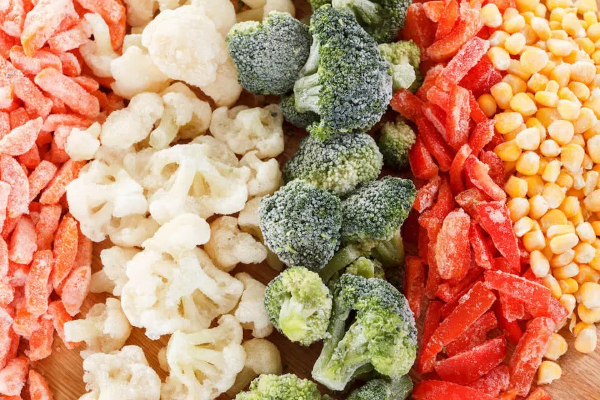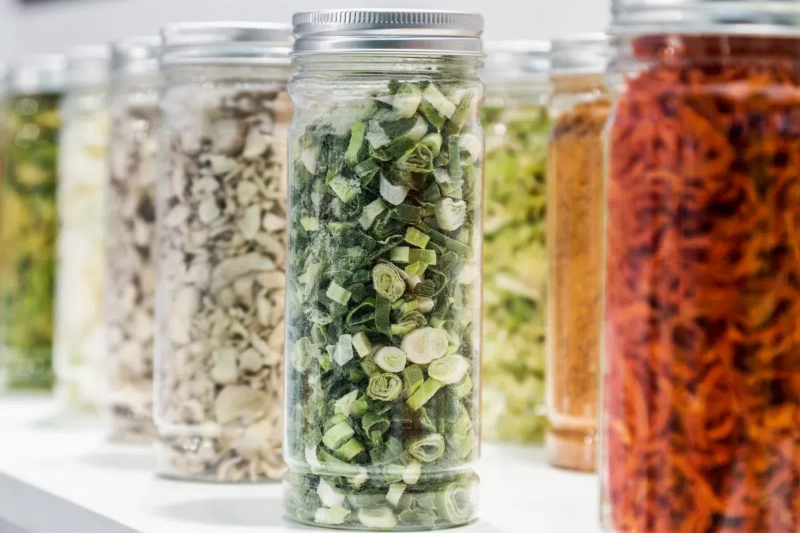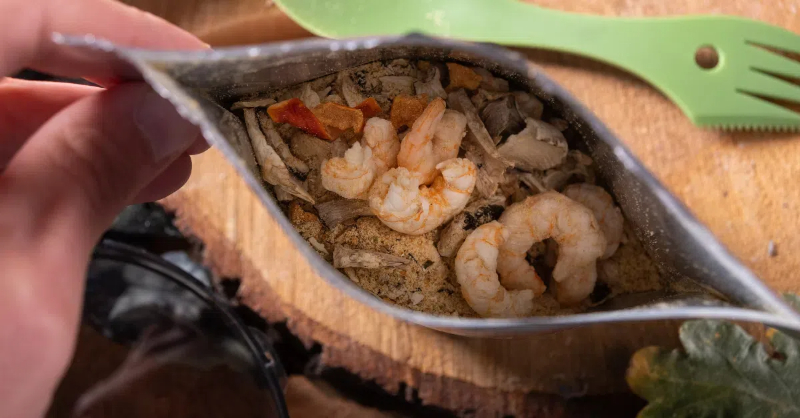
Content Menu
● Introduction to Freeze Drying at Home
● Understanding the Freeze Drying Process
● DIY Freeze Drying Methods
>> 1. The Freezer Method
>> 2. The Dry Ice Method
● Best Foods for DIY Freeze Drying
● Benefits of Freeze Drying Food at Home
● Tips for Successful DIY Freeze Drying
● Creative Uses for Homemade Freeze-Dried Snacks
● Rehydrating Freeze-Dried Foods
● Comparing DIY Methods to Commercial Freeze-Dryers
● Conclusion
● Frequently Asked Questions
>> 1. How long does freeze-dried food last when stored properly?
>> 2. Can all types of food be freeze-dried at home without a machine?
>> 3. Is freeze-dried food as nutritious as fresh food?
>> 4. How do I know if my DIY freeze-dried food is ready?
>> 5. Can I freeze dry liquids without a machine?
Introduction to Freeze Drying at Home
Freeze drying food has become increasingly popular among homesteaders, preppers, and food enthusiasts alike. This preservation method offers numerous benefits, including extended shelf life, retention of nutritional value, and lightweight storage. While commercial freeze-drying machines can be expensive, there are alternative methods for freeze drying food without a machine. In this comprehensive guide, we'll explore DIY freeze-dried food techniques, homemade freeze-dried snacks, and budget-friendly food preservation methods that you can easily implement in your own kitchen.
Understanding the Freeze Drying Process
Before we dive into the methods of freeze drying food without a machine, it's essential to understand the basic principles behind this preservation technique. Freeze drying, also known as lyophilization, involves removing moisture from frozen food through sublimation. This process occurs when ice transitions directly from a solid to a gas state without passing through the liquid phase.The freeze drying process typically consists of three main stages:
1. Freezing: The food is rapidly frozen to preserve its structure and nutrients.
2. Primary drying: The frozen water in the food is removed through sublimation under low pressure.
3. Secondary drying: Any remaining bound water is removed through desorption.
While commercial freeze-dryers automate this process, we'll explore how to achieve similar results using alternative methods for freeze drying fruits and vegetables, as well as other foods, at home.
DIY Freeze Drying Methods
1. The Freezer Method
One of the simplest ways to freeze dry food without a machine is by using your home freezer. This method is ideal for beginners looking to experiment with freeze drying for the first time.Steps:
1. Prepare your food by washing, slicing, or chopping it into small, uniform pieces.
2. Arrange the food in a single layer on a baking sheet or tray, ensuring the pieces don't touch each other.
3. Place the tray in your freezer, setting it to the coldest temperature possible.
4. Leave the food in the freezer for several weeks, typically 2-3 weeks for most items.
5. Check the food periodically to ensure it's completely dry and brittle.
6. Once fully freeze-dried, store the food in airtight containers or vacuum-sealed bags.
While this method is straightforward, it does have some limitations. The process can take several weeks, and the results may not be as consistent as those achieved with a commercial freeze-dryer. However, it's an excellent way to start experimenting with freeze drying at home without investing in expensive equipment.

2. The Dry Ice Method
Another DIY approach to freeze drying food without a machine involves using dry ice. This method is faster than the freezer method and can produce better results for certain types of food.Steps:
1. Prepare your food as you would for the freezer method.
2. Place the food in a large cooler or insulated container.
3. Cover the food with a layer of dry ice, using about 1 pound of dry ice per pound of food.
4. Close the container, leaving it slightly open to allow gases to escape.
5. Let the dry ice sublimate completely, which usually takes 24-48 hours.
6. Once the dry ice has disappeared, check the food to ensure it's fully dried.
7. Store the freeze-dried food in airtight containers or vacuum-sealed bags.
This method can be more effective for freeze drying fruits and vegetables with high water content. However, it requires careful handling of dry ice and proper ventilation to ensure safety.
Best Foods for DIY Freeze Drying
When starting your journey into homemade freeze-dried snacks and long-term food storage, it's essential to choose foods that are well-suited for the process. Here are some of the best options for freeze drying at home:
1. Fruits: Berries, apples, bananas, peaches, and mangoes
2. Vegetables: Peas, corn, carrots, and bell peppers
3. Herbs: Basil, parsley, cilantro, and dill
4. Lean meats: Chicken, turkey, and lean beef (cooked and shredded)
5. Dairy: Shredded cheese and yogurt drops
These foods generally have high water content and freeze-dry well without a machine. As you gain experience, you can experiment with more complex recipes and combinations to create unique homemade freeze-dried snacks.
Benefits of Freeze Drying Food at Home
Exploring alternative food preservation methods like freeze drying can offer numerous advantages for both short-term and long-term food storage. Here are some key benefits of freeze drying food without a machine:
1. Extended shelf life: Properly freeze-dried foods can last for years when stored correctly.
2. Nutritional retention: The freeze drying process preserves most of the food's original nutrients.
3. Lightweight and compact: Freeze-dried foods are lightweight and take up less storage space.
4. Versatility: Freeze-dried foods can be easily rehydrated and used in various recipes.
5. Cost-effective: DIY freeze drying can be more budget-friendly than purchasing commercial freeze-dried products.
6. Reduced food waste: You can freeze dry surplus produce or leftovers to prevent spoilage.
7. Customization: Create your own unique blends and mixes of freeze-dried ingredients.
By mastering the art of freeze drying at home, you can enjoy these benefits while developing valuable food preservation skills.

Tips for Successful DIY Freeze Drying
To ensure the best results when freeze drying food without a machine, consider the following tips:
1. Choose high-quality, fresh ingredients for optimal flavor and nutritional value.
2. Cut foods into uniform sizes to ensure even drying.
3. Blanch vegetables before freeze drying to preserve color and texture.
4. Use a food dehydrator in conjunction with freezing for more efficient moisture removal.
5. Store freeze-dried foods in airtight containers with oxygen absorbers for maximum shelf life.
6. Label containers with the contents and date of freeze drying for easy organization.
7. Experiment with different foods and techniques to find what works best for you.
Creative Uses for Homemade Freeze-Dried Snacks
Once you've mastered the art of freeze drying food without a machine, you can explore various creative uses for your homemade freeze-dried snacks:
1. Trail mix: Combine freeze-dried fruits with nuts and seeds for a nutritious hiking snack.
2. Instant soups: Create your own instant soup mixes using freeze-dried vegetables and herbs.
3. Flavoring powders: Grind freeze-dried fruits or vegetables into powders for natural food coloring and flavoring.
4. Camping meals: Prepare lightweight, nutritious meals for outdoor adventures.
5. Emergency food supplies: Build a stockpile of long-lasting, nutrient-dense foods for emergency preparedness.
Rehydrating Freeze-Dried Foods
To enjoy your freeze-dried foods, you'll need to rehydrate them properly. Here's a general guide for rehydrating freeze-dried ingredients:
1. Place the freeze-dried food in a bowl or container.
2. Add warm water, starting with a 1:1 ratio of water to food.
3. Let the food soak for 5-10 minutes, or until it reaches the desired consistency.
4. Drain any excess water and use the rehydrated food in your recipes.
Remember that different foods may require varying amounts of water and rehydration times. Experiment to find the perfect balance for each ingredient.
Comparing DIY Methods to Commercial Freeze-Dryers
While freeze drying food without a machine can be an effective and budget-friendly option, it's important to understand how these DIY methods compare to commercial freeze-dryers:
Advantages of DIY methods:
- Lower initial cost
- No electricity required (for some methods)
- Suitable for small-scale preservation
Disadvantages of DIY methods:
- Longer processing time
- Less consistent results
- Limited capacity
Commercial freeze-dryers offer faster processing times, more consistent results, and larger capacities. However, they come with a significant upfront cost and ongoing energy consumption. For those just starting out or working with small quantities, DIY freeze drying methods can be an excellent alternative.
Conclusion
Freeze drying food without a machine is a valuable skill that can enhance your food preservation repertoire. By mastering these DIY techniques, you can create long-lasting, nutritious foods for emergency preparedness, outdoor adventures, or everyday snacking. While the process may take longer than using a commercial freeze-dryer, the benefits of cost savings and self-sufficiency make it a worthwhile endeavor for many food enthusiasts and homesteaders.
As you explore the world of homemade freeze-dried snacks and alternative food preservation methods, remember to experiment with different foods and techniques to find what works best for you. With practice and patience, you'll be able to create high-quality freeze-dried foods that rival commercial products, all from the comfort of your own home.

Frequently Asked Questions
1. How long does freeze-dried food last when stored properly?
Answer: Properly stored freeze-dried food can last for 25-30 years. To achieve this long shelf life, store the food in airtight containers with oxygen absorbers in a cool, dry place away from direct sunlight.
2. Can all types of food be freeze-dried at home without a machine?
Answer: While many foods can be freeze-dried at home, some are better suited for the process than others. Foods with high water content, such as fruits and vegetables, work best. Avoid freeze-drying foods with high fat content, as they may not preserve well and can become rancid over time.
3. Is freeze-dried food as nutritious as fresh food?
Answer: Freeze-dried food retains most of its original nutritional value. The process preserves vitamins, minerals, and enzymes better than many other preservation methods. However, some water-soluble vitamins may be slightly reduced during the process.
4. How do I know if my DIY freeze-dried food is ready?
Answer: Properly freeze-dried food should be completely dry and brittle. It should snap or crumble easily when broken. If there's any moisture or flexibility in the food, it needs more time in the freezer or with dry ice.
5. Can I freeze dry liquids without a machine?
Answer: Freeze drying liquids without a machine can be challenging. It's best to start with solid foods or semi-solid foods like yogurt. For liquids, you may need to freeze them into ice cubes first and then attempt the freeze-drying process, but results may vary.











